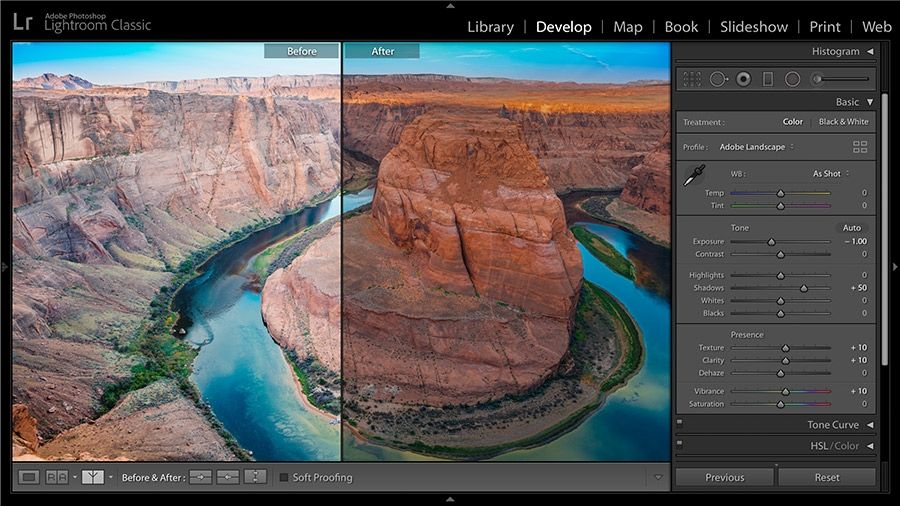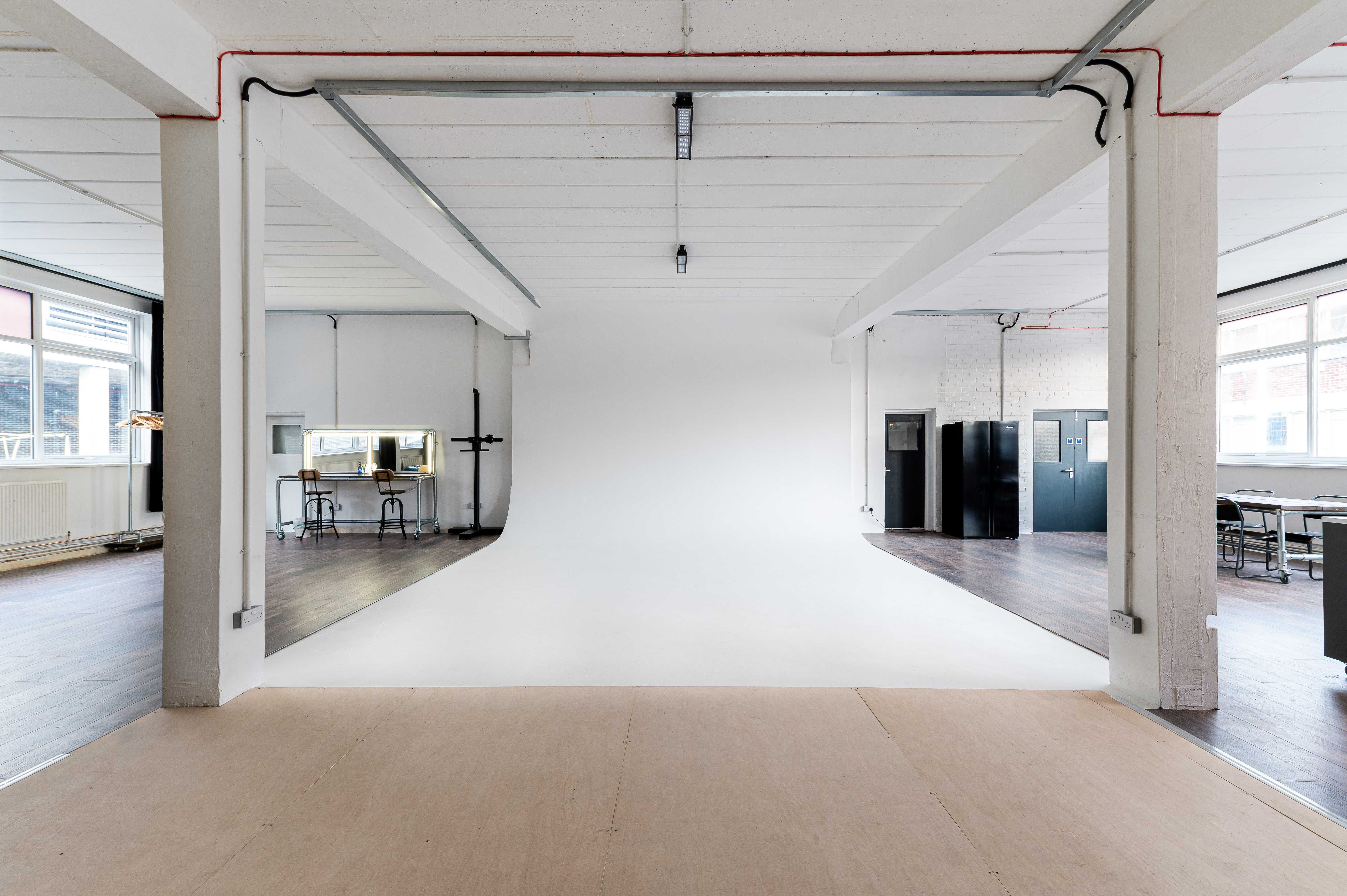Photo editing software represents every photographer’s secret weapon. Even a short editing session can transform an underwhelming image into something truly captivating, allowing you to enhance everything from the colour to the clarity of your image. If you’re concerned about getting photography clients to keep coming back for more, you’ll need decent editing software to maximise the quality of your output.
So, what photo editing software should you use to create high-quality images that stand out from the crowd? The answer depends on a range of factors, including your aims, budget, and technical skills. To help you find photo editing software that suits your needs, we’ve put together a list of the best programmes on the market right now.
Contents:
- Adobe Photoshop CC
- Adobe Lightroom
- DxO PhotoLab
- CyberLink PhotoDirector
- GIMP
- Capture One Pro
- Affinity Photo 2
- Luminar Neo
1. Adobe Photoshop CC

Adobe Photoshop is widely considered the go-to image manipulation programme for both amateur and professional photographers. Photoshop offers a pared-back interface to ensure users aren’t distracted by vibrant icons or features. Instead, they’re given maximum creative control over their images thanks to a vast range of tools, including cropping, eyedropper, cloning, spot healing, lassoing, and zoom tools. Photoshop’s layering functions also allow users to achieve impressive editing feats with relative ease – ensuring the software remains a vital tool for professional photographers and graphic designers around the world. If you're a commercial photographer looking to edit great eCommerce photographs, this may be the choice for you. It’s worth noting, however, that Adobe applications are only available via subscription models, meaning you’ll have to continue paying for the service for as long as you need it.
Advantages:
- Advanced features, including filters, textures, and overlays
- Supports drawing tablets – great for retouching
- Integrated image library
- Up to 10TB of cloud storage
Potential drawbacks to consider:
- While amateur users can quickly get to grips with Photoshop’s basic functions, the software can take months to master
- Adobe subscriptions are at the pricier end of the market
2. Adobe Lightroom

Adobe Lightroom comes as part of a Creative Cloud subscription and is easier to learn than Photoshop. A great photo editing software for amateurs, Lightroom allows users to adjust a range of visual factors, including vibrance, saturation, highlights, shadows, and exposure. It also allows users to tag images with star ratings and keywords, potentially speeding up the sorting and selection process if you need to handle a large batch of photos. If you’re torn between Lightroom and Photoshop, Lightroom represents a great option for amateur editors hoping to touch up their images and get to grips with Adobe. Photoshop, meanwhile, is better for extensive manipulation and professional retouching.
Advantages:
- User-friendly and intuitive
- Great for editing a large number of photos in one session
Potential drawbacks to consider:
- Limited features and lacks Photoshop’s powerful layering capabilities
- You’ll need to subscribe to Adobe’s Creative Cloud to access Lightroom, even if you don’t want to use its other programmes like Photoshop.
3. DxO PhotoLab

DxO PhotoLab is one of the best photo editing software for precise image correction, offering auto-correct features far surpassing those included in other photography software. The programme also includes two separate interfaces for organising and editing your photos, helping photographers streamline their workflows. DxO PhotoLab is available as a one-off purchase, making it a suitable option for those who would rather not tie themselves into a subscription deal. It’s also relatively easy to use and features smart tools that can make photographs look more striking and professional in a matter of seconds. Perfect for rookies and pros alike!
Advantages:
- Excellent raw image processing
- Detailed adjustments and edge softness correction tools
- Easy to use
- No subscription required
Potential drawbacks to consider:
- Lacks the vast range of tools available in programmes like Photoshop
- Can’t support HEIC/HEIF files
4. CyberLink PhotoDirector

If you need advanced layer support and would rather avoid Photoshop, CyberLink PhotoDirector represents a powerful solution. The software offers a vast array of tools, including masks, guided edits, cartoon effects, face beautification, drawing tools, and adjustment layers. PhotoDirector also incorporates the power of artificial intelligence to deliver cutting-edge features, including content-aware removal, people masking, and sky replacement. For example, if you've used lighting equipment to fake natural lighting in your photography, and you want to edit in a sense of realism, then these advanced features will stand you in good stead. While Photoshop devotees are unlikely to switch to PhotoDirector anytime soon, this feature-rich programme certainly gives the world’s leading photo editor a run for its money.
Advantages:
- Bursting with advanced features
- Fun and unusual tools, including an anime feature
- Comes in both subscription and non-subscription versions
Potential drawbacks to consider:
- Downloading PhotoDirector consumes lots of disk space
- The interface is a little crowded and overwhelming
- More expensive than many other editing software
Looking for photoshoot locations in London?
Choose from 1000+ spaces and locations on Tutti and deal directly with space hosts for a quick, hassle-free booking process.

5. GIMP

If you’re on the hunt for free photo editing software, you’ll struggle to do much better than GIMP (a.k.a. GNU Image Manipulation Program). This open-source editing programme offers a wide range of professional editing tools that can achieve similar results to their paid counterparts. On top of traditional tools such as scale, pencil, airbrush, and smudge, GIMP offers a limited number of playful filters, including neon effects and glass tile effects. You can also use smart layering features that almost rival Photoshop’s renowned layering tools.
If you’ve channelled much of your budget into photo studio equipment and great photo studios, your images are unlikely to require extensive editing and manipulation. In this case, a free program like GIMP represents a fantastic cost-saving alternative that is easy and quick to use – good news if you’re working towards tight deadlines! However, if you’re planning to grow your reputation as a photographer, you’ll need to upgrade to paid editing software at some point.
Advantages:
- Totally free!
- Intuitive interface and compatible with most editable file formats
- Users benefit from a huge library of free plugins to customise their software
Potential drawbacks to consider:
- Fewer features than paid alternatives, with few automatic adjustment features
- While helpful for complex editing projects, layering tools are more difficult to use than those in Photoshop
- No detailed tech support or in-built tutorials
6. Capture One Pro

If you’re willing to splash some cash in exchange for premium features, look no further than Capture One Pro. This raw processing and photo editing software caters specifically for professional studio photographers while avoiding overly complex features. The user interface is clear and pared-back, offering a layering system that won’t take hours to master. Users will also benefit from state-of-the-art panorama stitching and HDR merge tools, allowing them to seamlessly combine photographic images with overlapping fields of view to create an extensive panorama.
Capture One Pro also features highly intuitive file storage and organisation tools, allowing photographers to sort and filter their images in smart albums and add metadata such as keywords. While the photo editing software does not yet offer cloud storage, it offers remote collaboration tools that make sharing projects with clients quick and simple.
Advantages:
- Sleek features unavailable in other editing software
- Magic brush and style tools for quick retouching
- Premium adjustment layering
- High raw processing quality
Potential drawbacks to consider:
- One of the most expensive editors on the market
- It’s not made for beginners and includes a vast array of features you may not need
7. Affinity Photo 2

Affinity Photo 2 is one of the cheapest single-payment editors on the market. Don’t be fooled by its low price point, however. This smart piece of software is powerful enough to compete with subscription services such as Photoshop and offers an array of features designed for professional photographers to enhance their work. On top of powerful layering, masking, and retouching tools, Affinity Photo 2 offers five different workspaces for users to complete different tasks, including Photo, Liquify, Develop, Tone Mapping, and Export. The Export workspace, for example, allows you to choose the file formats and compression settings for your image.
While Affinity Photo 2 has the potential to add gorgeous depth to your images, it’s not easy to use. You’ll need to get to grips with a range of high-level editing techniques and won’t have access to smart features that automatically touch up your images. Fortunately, however, Affinity offers free trials and has created a range of video tutorials to help newbies get to grips with the photo editing software.
Advantages:
- Single-payment software
- Professional-level editing tools
- Very cost-effective
Potential drawbacks to consider:
- No centralised cataloguing system
- Takes dedication to learn, particularly for those unfamiliar with other photo editors
8. Luminar Neo

Luminar Neo is an AI-based photo editing software designed to automate many editing jobs that traditionally take photographers hours to complete. For example, users can achieve chic background blur effects or seamlessly eliminate subjects’ blemishes within seconds. Plus, Luminar is constantly updating its effects and templates to ensure users can continue experimenting with their images and push the boundaries of what’s possible. If you’re looking to combine ease of use with fun effects that elevate your photoshoot concepts, Luminar Neo could represent the perfect photo editing software.
However, while Luminar Neo certainly offers novel features, it doesn’t feature the layering support or vast array of features most photographers crave. If you’re already familiar with programmes such as Photoshop, this software may prove disappointing.
Advantages:
- Impressive AI capabilities
- Non-destructive workflows
- Customisable workspaces
Potential drawbacks to consider:
- Seasoned photographers may find the features restrictive
- Complicated pricing model (you can purchase a lifetime license or subscription plan, but you also have the option to purchase extensions)
- Can get expensive depending on the package you choose
Start honing your craft today!
Every photographer knows you need time, patience, and the right tools to create images that turn heads and build your reputation. Whether you’re an amateur photographer or a seasoned veteran, the editing process represents a vital step that will add the finishing touches to your work and ensure it receives the attention it deserves when it comes to sharing online or posting on your photography website.
If you’re new to photo editing software, we recommend playing around with a free programme such as GIMP or embarking on a free trial with a paid platform. Everyone is different, with some photographers swearing by Photoshop and others preferring more niche programmes. Test the waters, and remember to have fun!
Of course, you’ll also need excellent photography equipment and conditions to snap captivating shots. As well as investing in top camera equipment, you’ll likely need to hire commercial photography studios that suit your budget and space requirements or browse Tutti's list of premium spaces below to find your perfect match, today.
















